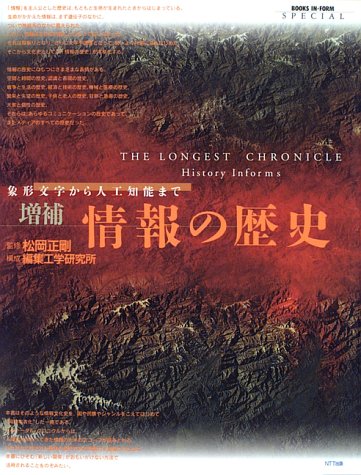4 0 0 0 OA Hitch Haiku ~コンピュータによる俳句創作支援システム~
- 著者
- 土佐 尚子 尾原 秀登 美濃 導彦 松岡 正剛
- 出版者
- 一般社団法人 映像情報メディア学会
- 雑誌
- 映像情報メディア学会誌 (ISSN:13426907)
- 巻号頁・発行日
- vol.62, no.2, pp.247-255, 2008-02-01 (Released:2010-05-01)
- 参考文献数
- 15
- 被引用文献数
- 1
The authors maintain that there are unique and common forms of cultures that humans set aside such as the behavior and grammar within each culture. We suggest a computer model of this and a method of interactive expression and experiencing cultural understanding using IT called "cultural computing". This paper describes Hitch Haiku, a system based on cultural computing that interactively aids users in generating haiku, the world's shortest poems with imagery-maximizing mechanisms. First, "kire-ji" and particles are added to the word (s) input by a user to make a five or seven-character phrase, then phrases including terminology related to the user's input are located in a phrase database holding examples of haiku from the literary calendar, ensuring the cultural validity of the haiku. These phrases are then "hitched" together to generate a haiku. Although the haiku generated by this system have periodically resulted in flawed haiku, the ability to generate haiku that support the expansion of users' minds has been confirmed through assessment experimentation.
3 0 0 0 文化と情報技術の接点:知の編集における様相と連想
- 著者
- 松岡 正剛
- 出版者
- 一般社団法人情報処理学会
- 雑誌
- 情報処理 (ISSN:04478053)
- 巻号頁・発行日
- vol.39, no.12, pp.1199-1203, 1998-12-15
- 被引用文献数
- 1
- 著者
- 松岡 正剛
- 出版者
- 日経BP社
- 雑誌
- 日経ビジネスassocie (ISSN:13472844)
- 巻号頁・発行日
- vol.9, no.2, pp.61-63, 2010-01-19
古今東西の名著を取り上げるサイト「千夜千冊」の執筆者として知られる松岡正剛さん。膨大な情報を「編集」し、新たな知を創造し続けている。独自の日本文化論をビジネスパーソンに教える私塾なども開校する知の巨匠に、教養とは何か、いかにして身につけるかを聞いた。──松岡さんが開校する私塾には大手企業が社員を送り込むケースもあるそうですね。
1 0 0 0 OA われわれはいかにして物語性を獲得したか (<小特集>「大規模知識ベース」)
- 著者
- 松岡 正剛
- 出版者
- 一般社団法人 人工知能学会
- 雑誌
- 人工知能 (ISSN:21882266)
- 巻号頁・発行日
- vol.8, no.3, pp.297-304, 1993-05-01 (Released:2020-09-29)
1 0 0 0 情報の歴史 : 象形文字から人工知能まで
1 0 0 0 情報の歴史 : 象形文字から人工知能まで
- 著者
- 松岡正剛監修 編集工学研究所構成
- 出版者
- 日本電信電話株式会社
- 巻号頁・発行日
- 1990
1 0 0 0 OA われわれはいかにして物語性を獲得したか (<小特集>「大規模知識ベース」)
- 著者
- 松岡 正剛 Seigo Matsuoka
- 雑誌
- 人工知能学会誌 = Journal of Japanese Society for Artificial Intelligence (ISSN:09128085)
- 巻号頁・発行日
- vol.8, no.3, pp.297-304, 1993-05-01
1 0 0 0 OA 図書館員を編集する
- 著者
- 松岡 正剛
- 出版者
- 私立大学図書館協会西地区部会東海地区協議会
- 雑誌
- 館灯 (ISSN:03873919)
- 巻号頁・発行日
- vol.50, pp.7-13, 2012-03-31 (Released:2017-02-15)
1 0 0 0 映像情報メディアに期待する
1 0 0 0 遊行の博物学 : 主と客の構造
- 著者
- 土佐 尚子 松岡 正剛
- 出版者
- 特定非営利活動法人 日本バーチャルリアリティ学会
- 雑誌
- 日本バーチャルリアリティ学会論文誌 (ISSN:1344011X)
- 巻号頁・発行日
- vol.10, no.1, pp.41-47, 2005
- 参考文献数
- 13
We offer Cultural Computing as a method for cultural translation that uses scientific methods to represent the essential aspects of culture. Including images that heretofore have not been the focus of computing, such as images of Eastern thought and Buddhism, and the Sansui paintings, poetry and kimono that evoke these images, we projected the style of communication developed by Zen schools over hundreds of years into a world for the user to explore - a somewhat exotic Eastern Sansui world. Through encounters with Zen Koans and haiku poetry, the user is constantly and sharply forced to confirm the whereabouts of his or her self-consciousness. However, there is no "right answer" to be found anywhere.



